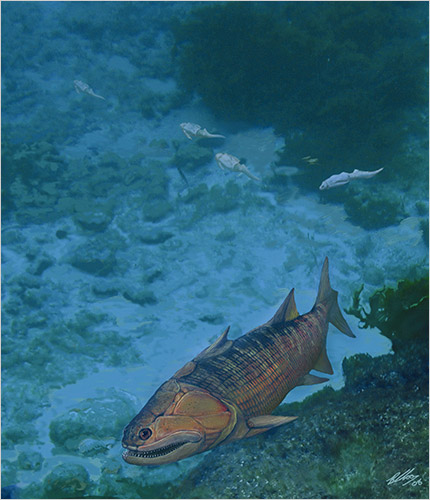| Location: Home > News > Events |
| New York Times:Near-Complete Fossil Offers Insight on Early Fish |
|
In trying to make evolutionary sense of the bony fish (and, by extension, land vertebrates) scientists have been hampered by a lack of completeness. Most of the earliest fossils of bony fish, dating to the Silurian period more than 416 million years ago, are fragmentary — a jawbone here, a tooth there.
A new find from limestone deposits in southern China is helping to clarify the situation. In a paper in Nature, Min Zhu and colleagues at the Institute of Vertebrate Paleontology and Paleoanthropology of the Chinese Academy of Sciences describe awell-preserved and practically complete fish fossil that is 418 million years old. The fish, which they call Guiyu oneiros, is about a foot long. Only the tail fin is lacking from the fossil, which even shows skin scales. The fish has a jaw, which makes it the oldest near-complete jawed vertebrate ever found. The fish is lobe-finned, meaning its fins are fleshier than ray-finned fish, and counts among its few living relatives the coelacanths. The finding also establishes a minimum date for the evolutionary divergence between lobe- and ray-finned fish. Since this lobe-finned one existed 418 million years ago, the split must have occurred sometime before. From: http://www.nytimes.com/2009/03/31/science/31obfish.html?ref=science
|
